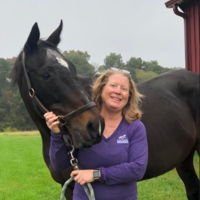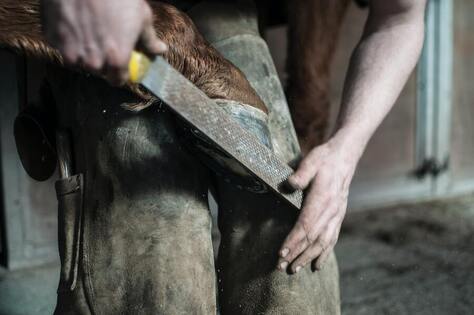
The Most Popular Horse Breeds Of 2019
Equestrian Advice & Guides General Equestrian
Build your business profile for FREE and expose your services to thousands of potential clients!
Create my profile now!
Adopting a rescue horse brings both joy and sorrow. The joy of getting to know a new horse and working with him/her to form that inimitable bond for which horse lovers strive. Sorrow comes from a sad past perhaps involving abuse or neglect, and in most cases, an unknown darkness in a horse’s memory bank that the rescuer may never decipher or soothe entirely. Building trust provides the ultimate cure, and that may take some time. In any case, the work and time is always worth the effort as the rewards are creating that trust.
A little over a year ago I adopted a Standie from the Standardbred Retirement Foundation, an admirable organization whose mission includes saving the breed from slaughter. Sadly, after often illustrious racing careers, these horses or53n go to rural communities and eventually end up in auctions that will lead to slaughter in places like Canada and Mexico where that is legal. Standies are a willing, cheerful, very trainable breed that can be used in many different disciplines.
When Jack came to me he was underweight with unhealthy hooves. The first order of business was to involve the vet, the farrier, and to put weight on the horse in a well planned, healthy way. Jack’s hooves were flared, unbalanced, and flaky as a result of malnutrition and improper hoof care and neglect. Restoring nutrition requires a healthy combination of grain and forage such as grass and hay. Quality pasture provides the best natural mix of protein, minerals, and vitamins to help restore healthy weight and hoof health.
Hooves need to be kept clean and dry with regular visits from the farrier. Ideally, horses need to move about as much as possible. Climate, soil conditions, and regions all play important roles and owners need to be aware of risks of thrush, white line disease, and abscesses. Genetics and conformation are important as well, but with a rescue, it’s too late to be worried about that. Part of the fun and the challenge is providing the right balance for the horse.
Over a year or so, Jack’s hooves have been restored to excellent health for which his farrier is very proud. He no longer limps as a result of balance issues due to flares, his hooves do not flake, and regular hoof care from an expert farrier with appropriate clipping has left his hooves smooth and solid. Jack has gained weight and now paces around the field playfully to engage with other horses and just to enjoy being a horse. If I put him in the arena, he will pace in circles, remembering his early training and racing career, but now, it’s just for the sheer joy of movement and energy.
Now 21, Jack is fully retired, happy, and healthy. The farrier said “ He doesn’t have a mean bone in his body.” Every time I go out to the barn or field he comes right to me. He loves attention and playing with his best equine friend. Jack has brought so much to his forever home with us, and he has come such a long way in terms of his general health. If you are looking for a really nice horse, consider adopting a Standard Bred!

